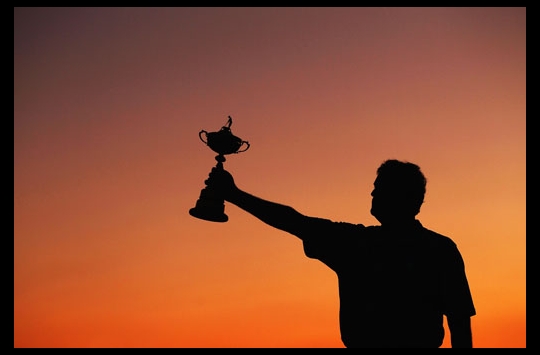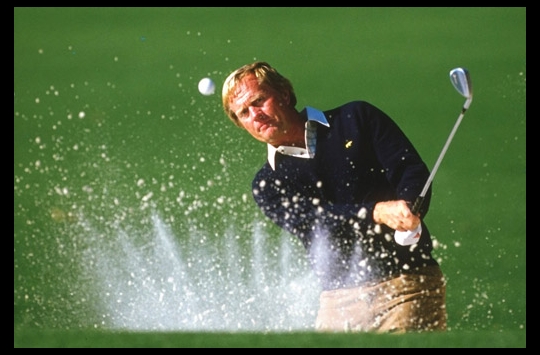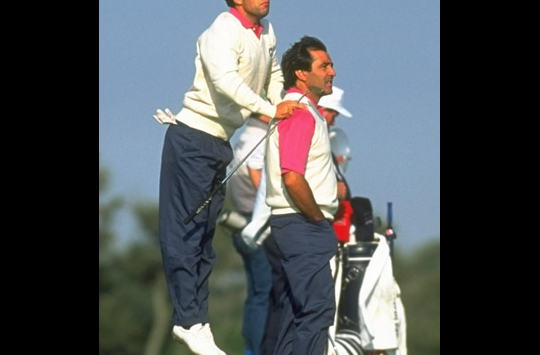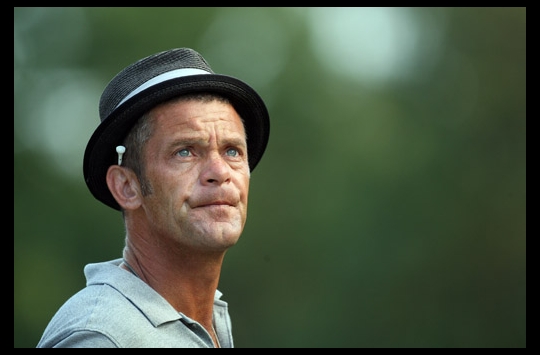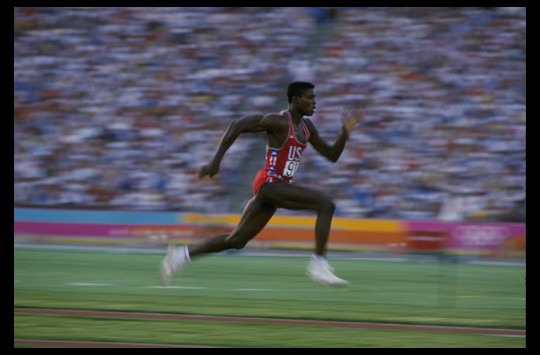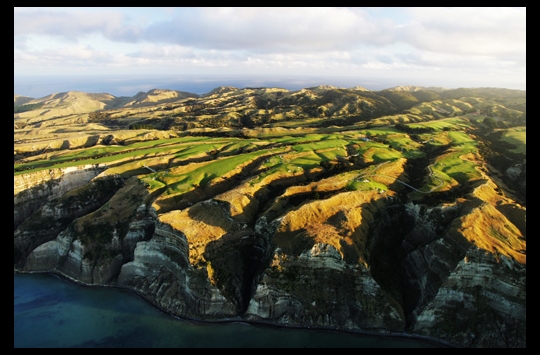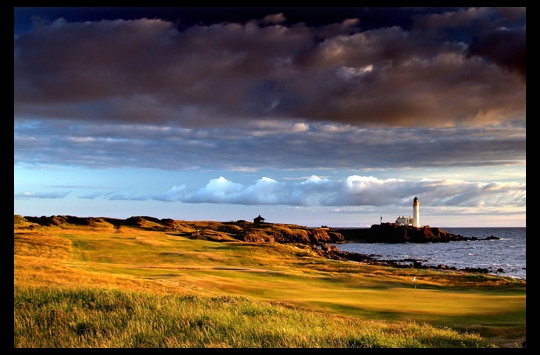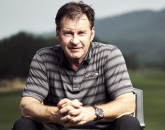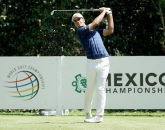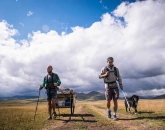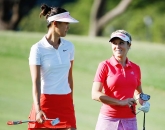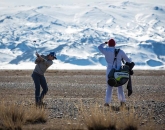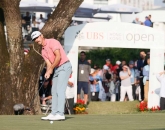Film versus digital – is there any debate?
There's no debate now. The thing is you can do so much more to a digital image. But it still comes down to the bottom line: you need to expose the image properly in the first place. If you don't expose it correctly you're losing information in digital; in film you're losing detail. I don't think the technical taking of images has changed, but there's no doubt that 'follow focus' has helped significantly. You have to know the capabilities of your equipment. The new generation of cameras are just ridiculous; they're a massively powerful computer in your hands. Understanding the settings is crucial. You can put so much into a camera – like saturation settings – to help you save time. The best thing about digital cameras however is their performance in low light. When Faldo beat [Scott] Hoch in the play-off at the 1989 Masters it was really dark and I got nothing, but I know that if I was using a digital camera I would have got a great frame. I still find it amazing to look at the back of the camera and see the image immediately; at Augusta in the old days it could take up to a week before I saw the results.
What tips would you give young enthusiasts wanting to follow in your footsteps and make a career out of golf photography?
Number one: love golf! You have to have a passion for golf that is unrivalled. You need to love sport in general, because that helps when you talk to golfers; most of those guys follow sport and talk of little else. You also have to have the most amazing amount of dedication. A lot of our general sports guys hate shooting golf because they go to a tournament for a week and don't get a great picture. You can go months without getting a great picture, so patience and a strong knowledge of golf is vital. Then you need to work on your backgrounds. It's often said you need to fill the frame but some of my favourite pictures show the course that's being played on. After all, the beauty of golf is where it's played.
Cannon's Top 10 Courses
[insert Cape Kidnappers.jpg]
1 Cape Kidnappers, New Zealand
2 Kauri Cliffs, New Zealand
3 Turnberry, Scotland
4 Muirfield, Scotland
5 Sand Hills, USA
6 Tralee, Ireland
7 Old Head, Ireland
8 Royal Dornoch, Scotland
9 Hirono, Japan
10 Emirates, Dubai
"Cape Kidnappers is a truly staggering course to photograph but you've got to shoot it from the air to really give it justice ... I think the light in Britain is still the best but New Zealand is very close ... One course that very nearly made this list is Blue Canyon in Phuket, which I really enjoyed ... I haven't travelled to China as much as I would like but I have visited Spring City in Kunming and thought that it was excellent ... I've been going to the Majlis Course at Emirates Golf Club in Dubai since 1989 when they first played the Desert Classic tournament. Back then it was just one square kilometer of green in the middle of the desert; but such has been the rate of development there, it now looks like it's in the middle of Hong Kong."
The Greatest: Seve Ballesteros
[insert Seve - Edit.jpg]
Severiano Ballesteros was without a doubt the favourite and most inspiring subject in my career as a golf photographer. During my 30 years walking the fairways, there have been only three golfers – Seve, Greg Norman and Tiger Woods – who each and every day I went out to shoot would give me a memorable photograph to capture.
Whether it was a smile, a scowl, a serious moment or a great action image, it did not matter. The eyes told the story – the unrivalled passion for the game of golf. It's a passion I share every day of my life, and I very much miss Seve being around as a person, let alone as a subject.
I actually met Seve in 1976, three years before I picked up a serious camera for the first time in my life. I was lucky enough to have drawn Seve as my professional in a pro-am at my home club, The Leicestershire Golf Club. I was the "young buck" of the club, a county golfer playing off scratch; he was the almost unknown brother of Manuel, a regular player on the tour. I remember that day so well, from the moment Manuel introduced us and I was greeted with that incredible smile, a smile that unbeknownst to me I was going to be privileged to capture on film in the years to come.
Two months later, he played that memorable chip shot threaded through the brown, lightning-fast bumps and hollows between two treacherous bunkers from left of the green on the eighteenth hole at Royal Birkdale to secure second place in the Open to Johnny Miller. This shot announced Seve to the world of golf and showed his creative genius that to this day has not been rivalled in the game. Tiger can and has played incredible golf shots, but I see no comparison to Seve for the ability to shape and pull off shots of unthinkable genius.
Such a sad day. Knowing Seve and his determination, he will not have given up lightly. Hopefully now he will have found his peace and will be charming the world up there with the greatest smile a photographer could ever photograph. How lucky and extremely privileged I was to have known him as a player and subject, but most of all as a friend. The split seconds of his life that I have been able to capture on film are moments of the career of a genius in a sport that I love.–David Cannon
Pages
- « first
- ‹ previous
- 1
- 2
- 3
- 4


